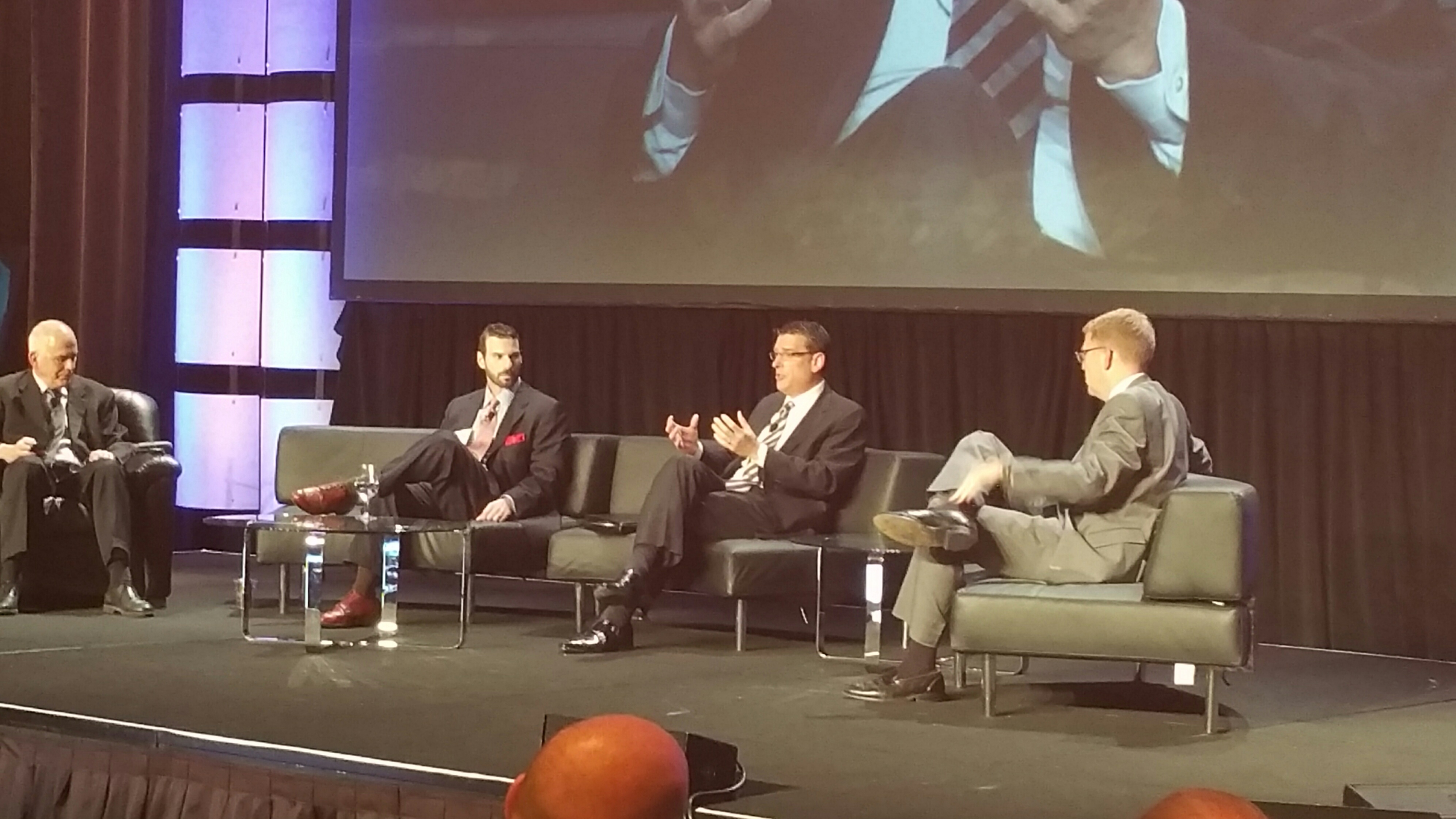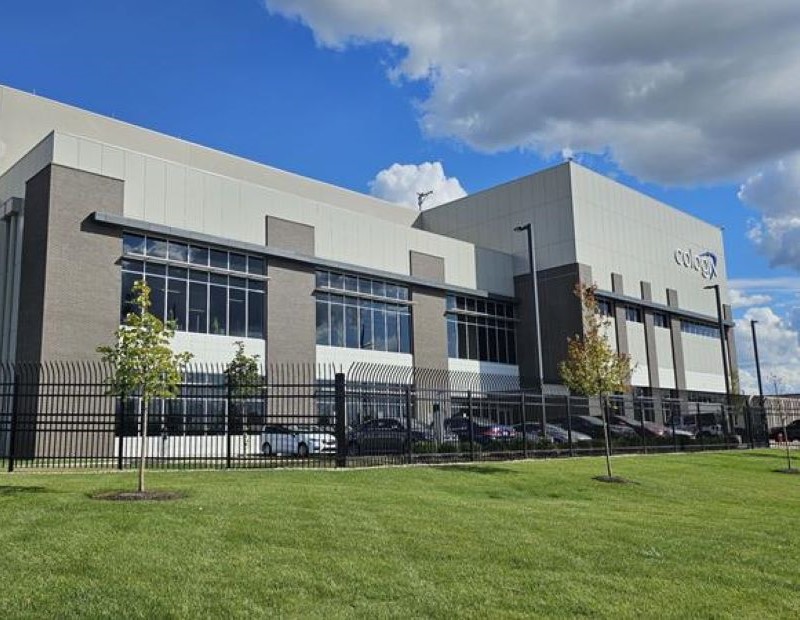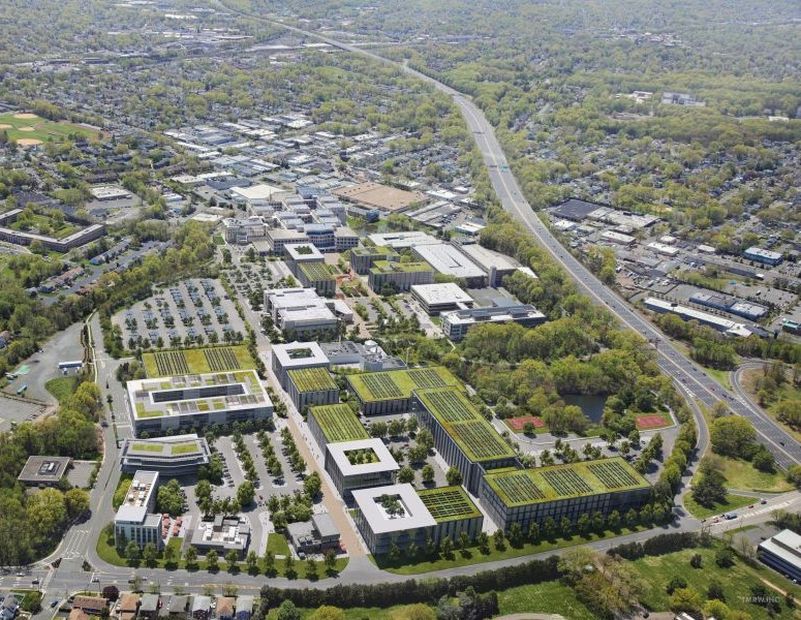Special Report: How Long Will Multifamily Defy Gravity?
Are developers and investors getting out over their skis? Experts weigh in.
By Paul Rosta, Executive Editor
Are multifamily developers and investors getting out over their skis?
At a time of sky-high optimism in the sector, only a minority would probably answer “yes.” Yet in sizing up today’s favorable economic and demographic trends, a trio of experts grappled with that question at a national conference in Las Vegas last week.

From left, John McManus, Hanley Wood; Ryan Severino, REIS; John Sebree, Marcus & Millichap; Steve Guggenmos, Freddie Mac.
Ryan Severino, the senior economist & director of research for REIS Inc., offered particularly strong caveats about Class A supply and demand during the annual event organized by Multifamily Executive. “It’s going to be very challenging going forward because everybody and their mother is building apartments today,” Severino warned his audience of several hundred professionals on Oct. 6. “Be careful—it’s not going to be as easy over the next four or five years.”
He added, “Be cautious when you hear people say, ‘This time is different.’”
Spurring Severino’s concern is the pace of Class A development. By mid-2016, the industry is on a pace to add between 280,000 and 300,000 new units of Class A product, the largest expansion since the mid-1980s. At the same time, however, Class A vacancy has remained virtually unchanged since 2013. “We’re kind of drinking from the fire hose a little bit in terms of Class A inventory,” he argued.
Responding to a question from John McManus, editorial director for Hanley Wood’s residential construction group and the panel’s moderator, another speaker identified several potential trouble spots to be wary of. “Oversupply could be a significant issue in a couple of years” if the rate of household formation fails to keep up with new product, said Steve Guggenmos, senior director of multifamily investments and research for Freddie Mac. Another concern, he added, would be investment values that rise faster than rent growth.
Even though Class A supply may soon become an issue, the panelists noted, demographic and economic factors still appear to favor years of strong demand. By all indications, abundant capital will continue to flow to the sector. Guggenmos noted that multifamily origination volume is climbing fast, from $190 million in 2014 to an estimated $225 million this year and $240 million in 2016.
John Sebree, director of Marcus & Millichap’s National Multi Housing Group, pointed to a confluence of trends among Millennials. Although the 6.4 percent unemployment rate among the group remains higher than the overall 5.1 percent rate, joblessness among people age 20 to 34 is falling far faster than in the broader population, he noted. That bodes well for household formation, and when Millennials do form households, 68 percent prefer to rent their new homes. “We feel that this demographic growth will continue to move in a very positive direction,” Sebree said.
Sebree also maintained that investors are demonstrating caution, even in the midst of highly favorable conditions. “I don’t think people are worrying about any one thing. They’re just being cautious,” Sebree said. “People are hesitant to get too far out over their skis.”
Guggenmos agreed that the Millennials’ brightening employment picture bodes well for the apartment sector. Jobs for workers aged 25 to 34 are growing at an annualized rate of about 1 million per year. Although the 142,000 jobs added by the economy in September fell short of expectations, the panelists called the month’s lackluster performance “a blip” and pointed to the 5.1 percent baseline rate as an indicator of a strong employment market. And Guggenmos found an additional positive note in the decline of the underemployment rate to less than 10 percent.







You must be logged in to post a comment.